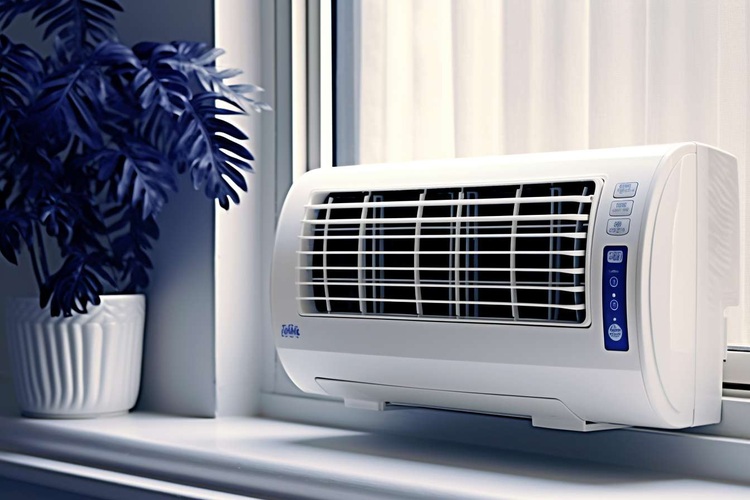Home Cooling 101: Mastering Air Conditioning Basics
Discover the ins and outs of air conditioning for your living space. From understanding how AC systems work to exploring energy-efficient options, this comprehensive guide empowers homeowners and renters alike to make informed decisions about indoor cooling. Learn how to create a comfortable, healthy environment while optimizing energy use in both houses and apartments.

Air conditioning has become an integral part of modern living, offering respite from sweltering temperatures and creating comfortable indoor environments. Whether you’re a homeowner or an apartment dweller, understanding the fundamentals of air conditioning can help you make informed decisions about cooling your space effectively and efficiently.
How Air Conditioning Works
At its core, an air conditioning system operates on a simple principle: it removes heat from indoor air and transfers it outside. This process involves several key components working in tandem:
-
Evaporator: This indoor unit contains coils filled with refrigerant. As warm indoor air passes over these coils, the refrigerant absorbs heat, cooling the air.
-
Compressor: The heart of the system, the compressor pressurizes the refrigerant, raising its temperature and converting it into a hot gas.
-
Condenser: Located outside, the condenser releases the absorbed heat into the outdoor air as the refrigerant passes through its coils.
-
Expansion valve: This component regulates refrigerant flow and reduces its pressure, cooling it down before it returns to the evaporator to restart the cycle.
As this process repeats, your indoor air is continuously cooled and dehumidified, creating a more comfortable living environment.
Benefits of Air Conditioning in Apartments
For apartment residents, air conditioning offers numerous advantages:
-
Temperature control: Maintain a consistent, comfortable indoor climate regardless of outdoor conditions.
-
Air quality improvement: Many AC units filter out allergens, dust, and pollutants, benefiting those with respiratory issues.
-
Noise reduction: Closed windows while running the AC can significantly dampen outside disturbances.
-
Enhanced productivity: A cooler environment can boost focus and efficiency when working from home.
-
Better sleep: Optimal sleeping temperatures can lead to improved rest quality.
In apartments where space is often limited and natural ventilation may be restricted, air conditioning becomes crucial for creating a livable environment during hot weather.
Choosing the Right AC for Your Home
Several air conditioning options are available for homes, each suited to different needs:
-
Central air systems: Ideal for larger homes, these cool the entire house through a duct network.
-
Window units: Self-contained and easy to install, these are perfect for cooling single rooms or small apartments.
-
Ductless mini-split systems: Offering flexibility for homes without existing ductwork, these consist of an outdoor compressor and one or more indoor air-handling units.
-
Portable air conditioners: These freestanding units can be moved between rooms, making them suitable for renters or those with installation restrictions.
-
Evaporative coolers: Also known as swamp coolers, these are energy-efficient options for dry climates.
Your choice should consider factors such as home size, local climate, budget, and any installation limitations.
Improving Indoor Air Quality with AC
Beyond cooling, air conditioning can significantly enhance indoor air quality:
-
Regular filter maintenance: Clean or replace AC filters every 1-3 months for optimal air filtration.
-
High-quality filters: Consider HEPA filters, which can remove up to 99.97% of airborne particles.
-
System cleanliness: Regular AC maintenance, including cleaning evaporator and condenser coils, prevents mold and bacteria growth.
-
Humidity control: Many modern ACs feature built-in dehumidifiers, reducing mold risk and improving overall air quality.
-
Air circulation: Use your AC’s fan setting to distribute filtered air throughout your home, even when not actively cooling.
Energy-Efficient Cooling for Apartments
Apartment dwellers can employ several strategies to stay cool while minimizing energy consumption and costs:
-
Energy Star certified units: These meet strict efficiency guidelines set by U.S. environmental agencies.
-
Smart thermostats: These devices learn your schedule and preferences, optimizing temperature settings automatically.
-
Ceiling fans: Used alongside AC, fans can make rooms feel cooler, allowing for higher thermostat settings.
-
Window treatments: Thermal curtains or blinds can block heat ingress, reducing AC workload.
-
Proper insulation: Well-insulated apartments prevent cool air escape and warm air infiltration.
Combining these approaches with an efficient AC system helps maintain comfort while keeping energy costs in check.
Conclusion
Air conditioning has transformed indoor living, providing comfort regardless of outdoor temperatures. Whether in a spacious house or a cozy apartment, understanding AC basics enables informed decisions about efficient and effective space cooling. By selecting the right system for your needs and maintaining it properly, you can enjoy a cool, comfortable, and healthy indoor environment year-round while optimizing energy use and costs.






